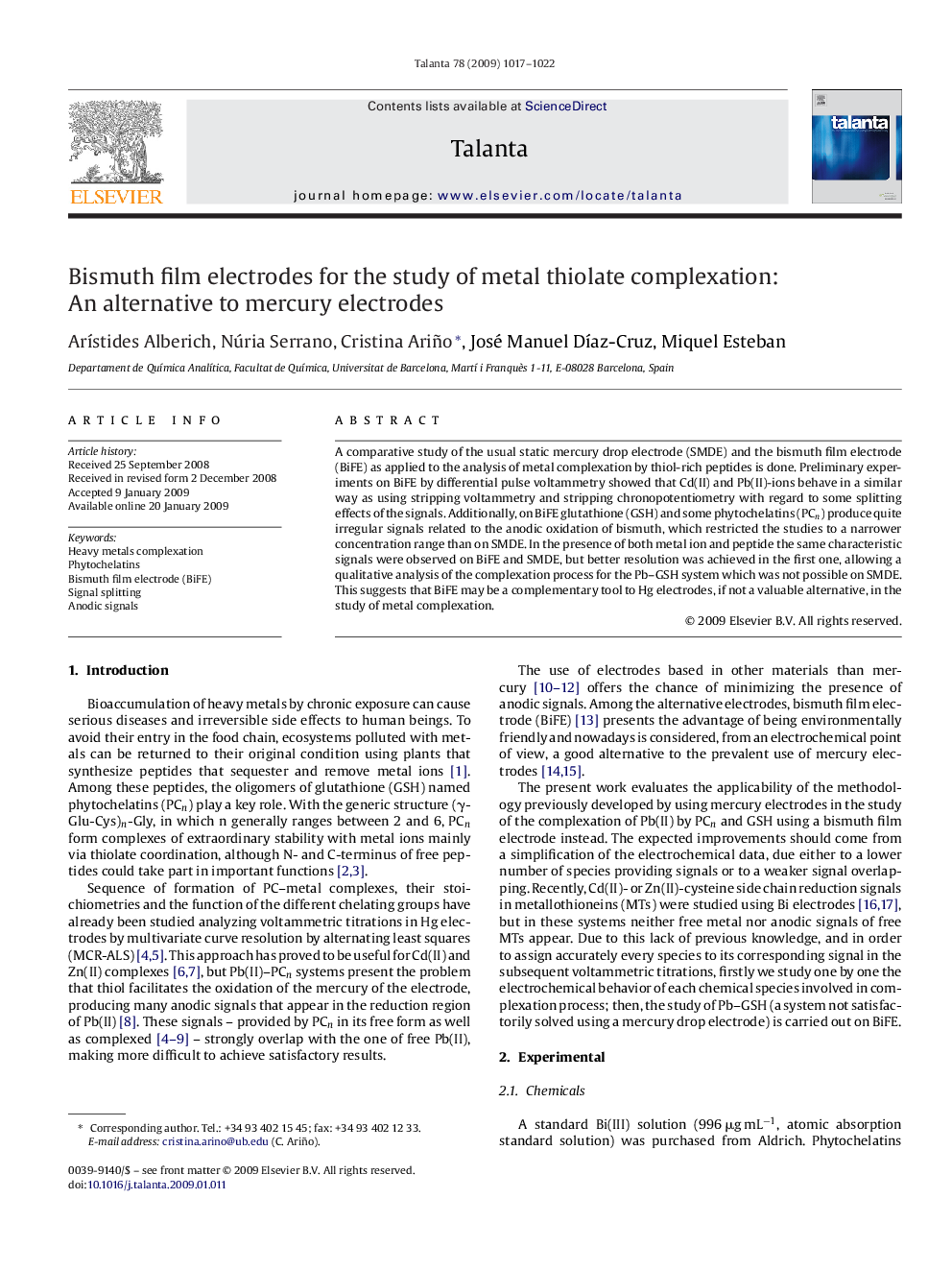| Article ID | Journal | Published Year | Pages | File Type |
|---|---|---|---|---|
| 1244940 | Talanta | 2009 | 6 Pages |
A comparative study of the usual static mercury drop electrode (SMDE) and the bismuth film electrode (BiFE) as applied to the analysis of metal complexation by thiol-rich peptides is done. Preliminary experiments on BiFE by differential pulse voltammetry showed that Cd(II) and Pb(II)-ions behave in a similar way as using stripping voltammetry and stripping chronopotentiometry with regard to some splitting effects of the signals. Additionally, on BiFE glutathione (GSH) and some phytochelatins (PCn) produce quite irregular signals related to the anodic oxidation of bismuth, which restricted the studies to a narrower concentration range than on SMDE. In the presence of both metal ion and peptide the same characteristic signals were observed on BiFE and SMDE, but better resolution was achieved in the first one, allowing a qualitative analysis of the complexation process for the Pb–GSH system which was not possible on SMDE. This suggests that BiFE may be a complementary tool to Hg electrodes, if not a valuable alternative, in the study of metal complexation.
